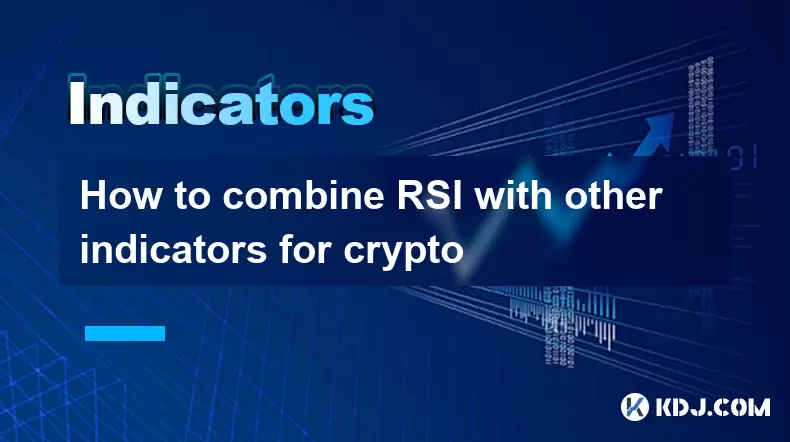-
 Bitcoin
Bitcoin $119,161.9671
1.52% -
 Ethereum
Ethereum $2,995.0722
2.34% -
 XRP
XRP $2.8555
5.32% -
 Tether USDt
Tether USDt $1.0002
0.00% -
 BNB
BNB $692.9308
1.48% -
 Solana
Solana $162.9611
1.87% -
 USDC
USDC $0.9999
0.00% -
 Dogecoin
Dogecoin $0.2014
2.84% -
 TRON
TRON $0.3032
0.90% -
 Cardano
Cardano $0.7464
6.51% -
 Hyperliquid
Hyperliquid $49.1533
5.71% -
 Stellar
Stellar $0.4773
24.77% -
 Sui
Sui $3.4979
3.93% -
 Chainlink
Chainlink $15.8552
6.01% -
 Hedera
Hedera $0.2401
23.85% -
 Bitcoin Cash
Bitcoin Cash $510.0474
0.97% -
 Avalanche
Avalanche $21.5550
4.82% -
 UNUS SED LEO
UNUS SED LEO $9.0389
-0.47% -
 Shiba Inu
Shiba Inu $0.0...01340
2.27% -
 Toncoin
Toncoin $2.9910
0.62% -
 Litecoin
Litecoin $96.4406
4.34% -
 Polkadot
Polkadot $4.0359
4.59% -
 Monero
Monero $338.4759
2.80% -
 Uniswap
Uniswap $8.6460
4.01% -
 Dai
Dai $0.9999
0.00% -
 Ethena USDe
Ethena USDe $1.0007
0.03% -
 Pepe
Pepe $0.0...01254
3.26% -
 Bitget Token
Bitget Token $4.3969
0.79% -
 Aave
Aave $312.2641
3.98% -
 Bittensor
Bittensor $397.0731
4.17%
How to avoid RSI false signals in crypto
"Adjust RSI thresholds (e.g., 20/80 or 15/85) and combine with trend tools like moving averages to reduce false signals in volatile crypto markets."
Jul 13, 2025 at 06:21 pm

Understanding RSI and Its Role in Crypto Trading
The Relative Strength Index (RSI) is a momentum oscillator used to measure the speed and change of price movements. In the cryptocurrency market, traders rely on RSI to identify overbought or oversold conditions. However, due to the volatile nature of crypto assets, RSI can generate false signals that may lead to poor trading decisions if not interpreted correctly.
False signals occur when the RSI indicates an overbought condition above 70 or an oversold condition below 30, but the price continues to move in the same direction rather than reversing. This is especially common during strong trends or periods of high volatility in the crypto market.
Using RSI with Trend Confirmation Techniques
One effective way to avoid false signals is to use RSI in conjunction with trend confirmation tools. For example, applying a moving average like the 200-day SMA (Simple Moving Average) can help determine the overall trend direction. If the price is above the SMA, it suggests a bullish trend, and vice versa.
- Use the 50-period EMA (Exponential Moving Average) to spot short-term trends.
- Confirm trend strength using MACD (Moving Average Convergence Divergence) crossovers.
- Overlay RSI readings only when they align with the dominant trend direction.
By ensuring that your RSI-based trade aligns with the broader trend, you reduce the chances of acting on misleading signals.
Adjusting RSI Thresholds for Crypto Volatility
Standard RSI settings use 30 and 70 as oversold and overbought thresholds. However, these levels are often too sensitive in the crypto market. Adjusting these thresholds can help filter out false alarms.
- Try setting oversold at 20 and overbought at 80 for more reliable signals.
- On highly volatile assets like altcoins, even higher thresholds like 15 and 85 may be appropriate.
- Test different settings on historical charts before applying them in live trading.
This approach helps avoid premature entries based on early RSI alerts that don't result in actual reversals.
Incorporating Price Action and Candlestick Patterns
Another method to validate RSI signals is by analyzing price action and candlestick patterns. When RSI hits overbought or oversold territory, look for corresponding candlestick formations such as engulfing patterns, hammers, or shooting stars.
- A bearish engulfing pattern near RSI 80 could confirm a reversal.
- A bullish hammer forming at RSI 20 might suggest a potential bounce.
- Always wait for candlestick closure before making a decision.
Combining RSI with candlestick analysis provides deeper context and increases the likelihood that a signal is genuine rather than a false positive.
Utilizing Multiple Time Frame Analysis
Analyzing multiple time frames can significantly reduce the risk of acting on false RSI signals. Traders should assess the higher time frame (e.g., 4-hour or daily) before making decisions based on shorter time frames (like 15-minute or 1-hour charts).
- Identify key support/resistance levels on higher time frames.
- Check RSI alignment between the daily and 4-hour charts.
- Only take trades when both time frames show confluence in RSI readings.
This multi-timeframe strategy ensures that traders aren’t reacting to temporary spikes or dips that don't reflect the broader market sentiment.
Filtering Signals with Volume Indicators
Volume plays a crucial role in confirming whether an RSI signal is valid. High volume during a price movement adds credibility to a potential reversal, while low volume often indicates weakness in the move.
- Use volume bars or On-Balance Volume (OBV) alongside RSI.
- Look for increasing volume when RSI exits overbought/oversold zones.
- Avoid entering trades if volume doesn’t confirm the price movement.
A rising volume during an RSI crossover can indicate institutional or large trader involvement, which makes the move more sustainable.
Frequently Asked Questions
Q: Can I completely eliminate RSI false signals in crypto trading?
While no indicator is 100% accurate, combining RSI with other technical tools such as moving averages, candlestick patterns, and volume indicators can significantly reduce the number of false signals you encounter.
Q: Should I always adjust the RSI default settings when trading crypto?
It’s recommended to test adjusted RSI settings (like 20/80 or 15/85) on various crypto pairs and time frames. Different assets react differently to volatility, so customization can improve accuracy.
Q: How do I backtest my RSI strategy effectively?
Use platforms like TradingView or MetaTrader to apply your RSI settings on historical data. Focus on how often the indicator gives correct signals after incorporating filters like volume or candlesticks.
Q: Is RSI better suited for day trading or swing trading in crypto?
RSI works well in both styles, but it requires different parameter settings. Day traders often prefer shorter RSI periods (like 7 or 10), while swing traders use standard or slightly adjusted 14-period RSI across higher time frames.
Disclaimer:info@kdj.com
The information provided is not trading advice. kdj.com does not assume any responsibility for any investments made based on the information provided in this article. Cryptocurrencies are highly volatile and it is highly recommended that you invest with caution after thorough research!
If you believe that the content used on this website infringes your copyright, please contact us immediately (info@kdj.com) and we will delete it promptly.
- Ruvi AI: The Audited Token Primed for 100x Gem Status
- 2025-07-14 06:50:12
- Bitcoin's New Highs: Retail Interest and the Allure of Crypto Presales
- 2025-07-14 07:10:11
- Dogwifhat (WIF) Price Prediction: Bullish MACD Signals Potential Breakout
- 2025-07-14 07:10:11
- BlockDAG's Bold Moves: Token Unlock Sparks User Activity Surge
- 2025-07-14 07:15:11
- Blockchain, DAG, and Scalability: A New Era of Crypto?
- 2025-07-14 07:15:11
- Real-World Assets, Tokens, and ETFs: A New Era of Investment?
- 2025-07-14 07:20:12
Related knowledge

Advanced RSI strategies for crypto
Jul 13,2025 at 11:01am
Understanding the Basics of RSI in Cryptocurrency TradingThe Relative Strength Index (RSI) is a momentum oscillator used to measure the speed and chan...

Crypto RSI for day trading
Jul 12,2025 at 11:14am
Understanding RSI in the Context of Cryptocurrency TradingThe Relative Strength Index (RSI) is a momentum oscillator used to measure the speed and cha...

Crypto RSI for scalping
Jul 12,2025 at 11:00pm
Understanding RSI in the Context of Crypto TradingThe Relative Strength Index (RSI) is a momentum oscillator widely used by traders to measure the spe...

What does an RSI of 70 mean in crypto
Jul 13,2025 at 06:07pm
Understanding the RSI Indicator in Cryptocurrency TradingThe Relative Strength Index (RSI) is a widely used technical analysis tool that helps traders...

How to avoid RSI false signals in crypto
Jul 13,2025 at 06:21pm
Understanding RSI and Its Role in Crypto TradingThe Relative Strength Index (RSI) is a momentum oscillator used to measure the speed and change of pri...

How to combine RSI with other indicators for crypto
Jul 12,2025 at 08:35am
Understanding the Role of RSI in Crypto TradingThe Relative Strength Index (RSI) is a momentum oscillator that measures the speed and change of price ...

Advanced RSI strategies for crypto
Jul 13,2025 at 11:01am
Understanding the Basics of RSI in Cryptocurrency TradingThe Relative Strength Index (RSI) is a momentum oscillator used to measure the speed and chan...

Crypto RSI for day trading
Jul 12,2025 at 11:14am
Understanding RSI in the Context of Cryptocurrency TradingThe Relative Strength Index (RSI) is a momentum oscillator used to measure the speed and cha...

Crypto RSI for scalping
Jul 12,2025 at 11:00pm
Understanding RSI in the Context of Crypto TradingThe Relative Strength Index (RSI) is a momentum oscillator widely used by traders to measure the spe...

What does an RSI of 70 mean in crypto
Jul 13,2025 at 06:07pm
Understanding the RSI Indicator in Cryptocurrency TradingThe Relative Strength Index (RSI) is a widely used technical analysis tool that helps traders...

How to avoid RSI false signals in crypto
Jul 13,2025 at 06:21pm
Understanding RSI and Its Role in Crypto TradingThe Relative Strength Index (RSI) is a momentum oscillator used to measure the speed and change of pri...

How to combine RSI with other indicators for crypto
Jul 12,2025 at 08:35am
Understanding the Role of RSI in Crypto TradingThe Relative Strength Index (RSI) is a momentum oscillator that measures the speed and change of price ...
See all articles
























































































